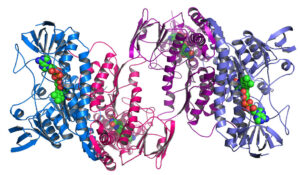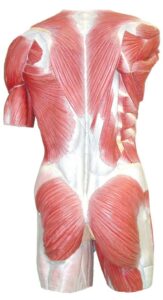These days, the word ‘protein powder’ is essentially synonymous with exercise and staying healthy. But what does it even mean? Is this seemingly magical muscle growth powder really worth it? And what is it even made of?
The recommended protein intake is 0.8 grams per kilogram of body weight per day for a sedentary adult. Adults who exercise regularly must add more to their diet and many choose to supplement their diets with protein powder. Protein powders are dried, powdered forms of protein that come from plants, eggs or milk.

So how exactly do protein powders work? Simply put, protein powders contain protein consisting of amino acids. Amino acids are essentially the building blocks of our body, and all amino acids have the same basic structure of a central carbon atom bonded to an amino group (NH2), carboxyl group (COOH) and a hydrogen atom. In proteins, each amino acid is linked together through covalent peptide bonds that join the amino group of one amino acid to the carboxyl group of another in order to form the long ‘chain-like structure’ of a protein.
So, our bodies take these proteins, break them up into their constituent amino acids, and use them to build and repair our muscles. Our muscles are made up of 2 protein filaments—actin and myosin. These protein filaments are prone to damage over time through mechanical stress due to the constant movement of our muscles during exercise and general use. Protein is needed to repair these filaments and allow the muscle to function.
When you exercise consistently, you will probably progress to running longer distances or lifting heavier weights. This establishes a cycle where your muscles are being damaged and rebuilt in a process known as protein muscle turnover. In order to make sure you are in an anabolic state—where your body is repairing and building more muscle—instead of losing muscle, you need to have a sufficient protein intake.
The three most common types of protein powders are protein concentrates, isolates and hydrolysates. Protein concentrates are created by extracting proteins through heat, acid or enzymes to break whole foods into proteins. This form of protein powder has approximately 60-80% protein, and 20-40% fats and carbohydrates. Protein isolates go through another filtering process to reduce the concentration of fats and carbohydrates to around 5-10%. Extracting protein hydrolysates requires further heating, which breaks bonds between the amino acids, making this form the most readily absorbed by the body.
Although protein powders are an incredible resource for our body, there are also other factors to take into account. Most protein powders are loaded with artificial flavors, preservatives, thickeners, and added sugars, and do not have the same nutritional content and fiber of naturally-occurring protein-rich foods, such as chicken, eggs, lentils, etc. Moreover, naturally-occurring whole protein-rich foods are said to stimulate our metabolism more by producing the “thermic effect”, i.e a whole food requires a lot more digestion in order to consume it, and in turn, causes us to burn more calories.
Additionally, an article from Harvard Health sheds light on the fact there is very little data on the long-term effects of consuming protein powders, nor are the FDA guidelines on what can be in protein powders strict or heavily regulated. A nonprofit organization called the Clean Label Project screened 134 protein powder products for 130 toxins and found many heavy metals, pesticides and other contaminants in these powders.
Moreover, overusing these protein powders and supplements can cause kidney damage, and dehydration as your kidneys try to get rid of the excess protein.

In conclusion, protein powders can be extremely beneficial to our bodies and aid in muscle growth when consumed in appropriate amounts along with whole foods. However, it is crucial to read the labels of the powders carefully—make sure to choose one that isn’t filled with preservatives and sugars in order to optimize your health!
Sources:
- https://www.mayoclinichealthsystem.org/hometown-health/speaking-of-health/are-you-getting-too-much-protein#:~:text=The%20recommended%20dietary%20allowance%20to,grams%20of%20protein%20per%20day.
- https://www.health.harvard.edu/staying-healthy/the-hidden-dangers-of-protein-powders#:~:text=What%20is%20protein%20powder%3F,thickeners%2C%20vitamins%2C%20and%20minerals.
- https://www.healthline.com/nutrition/best-protein-powder#TOC_TITLE_HDR_2
- https://www.khanacademy.org/science/biology/macromolecules/proteins-and-amino-acids/a/introduction-to-proteins-and-amino-acids
- https://www.scientificamerican.com/article/do-amino-acids-build-bigger-muscles/#:~:text=When%20you%20eat%20protein%2C%20your,a%20measure%20of%20protein%20metabolism
- https://www.livescience.com/does-protein-build-muscle
- https://fsi.colostate.edu/protein-powder/
- https://www.health.harvard.edu/staying-healthy/the-hidden-dangers-of-protein-powders#:~:text=What%20is%20protein%20powder%3F,thickeners%2C%20vitamins%2C%20and%20minerals
- https://www.eatthis.com/protein-powder-dangers-every-day/